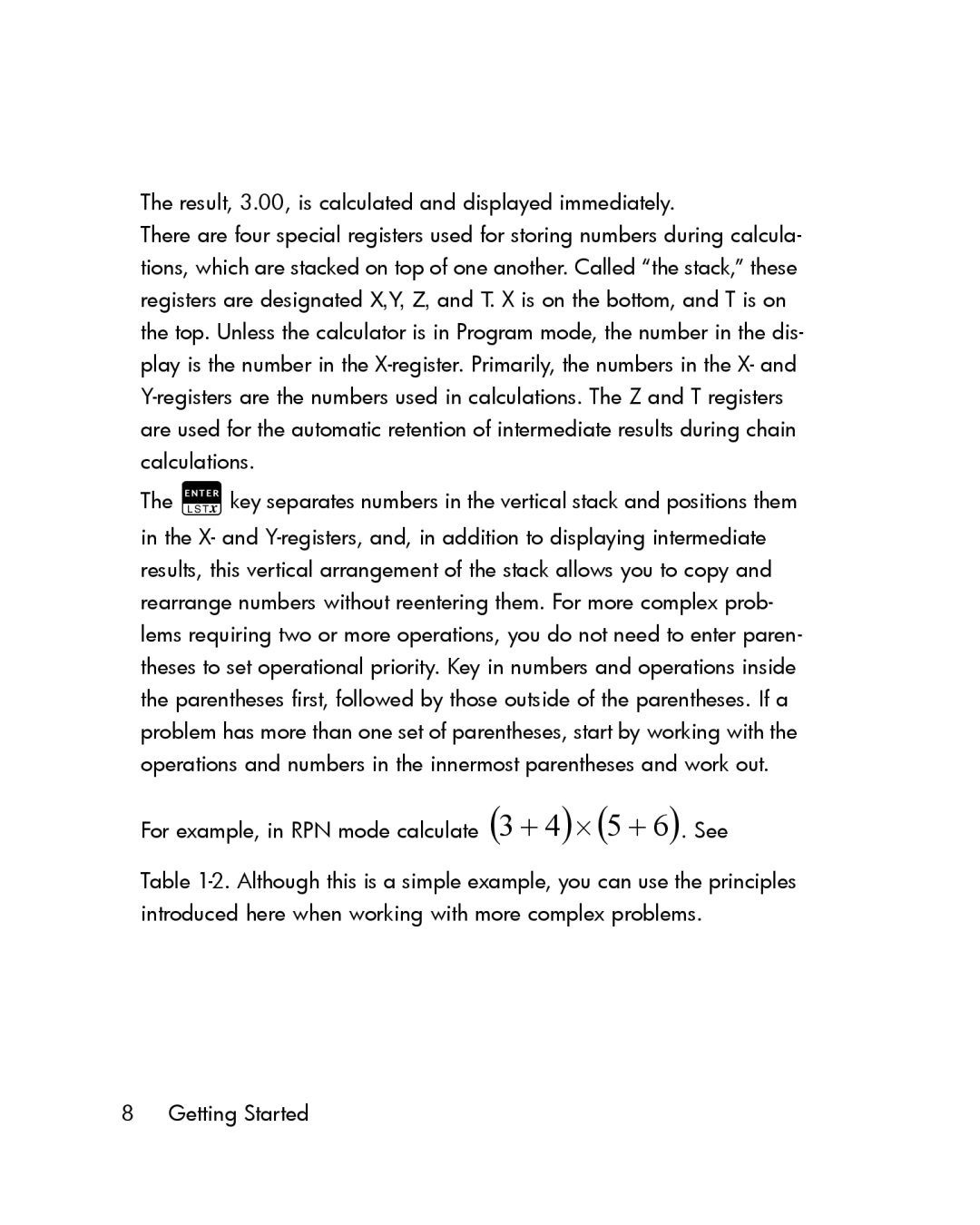The result, 3.00, is calculated and displayed immediately.
There are four special registers used for storing numbers during calcula- tions, which are stacked on top of one another. Called “the stack,” these registers are designated X,Y, Z, and T. X is on the bottom, and T is on the top. Unless the calculator is in Program mode, the number in the dis- play is the number in the X-register. Primarily, the numbers in the X- and Y-registers are the numbers used in calculations. The Z and T registers are used for the automatic retention of intermediate results during chain calculations.
The Rkey separates numbers in the vertical stack and positions them in the X- and Y-registers, and, in addition to displaying intermediate results, this vertical arrangement of the stack allows you to copy and rearrange numbers without reentering them. For more complex prob- lems requiring two or more operations, you do not need to enter paren- theses to set operational priority. Key in numbers and operations inside the parentheses first, followed by those outside of the parentheses. If a problem has more than one set of parentheses, start by working with the operations and numbers in the innermost parentheses and work out.
For example, in RPN mode calculate (3 + 4)× (5 + 6). See
Table 1-2.Although this is a simple example, you can use the principles introduced here when working with more complex problems.
